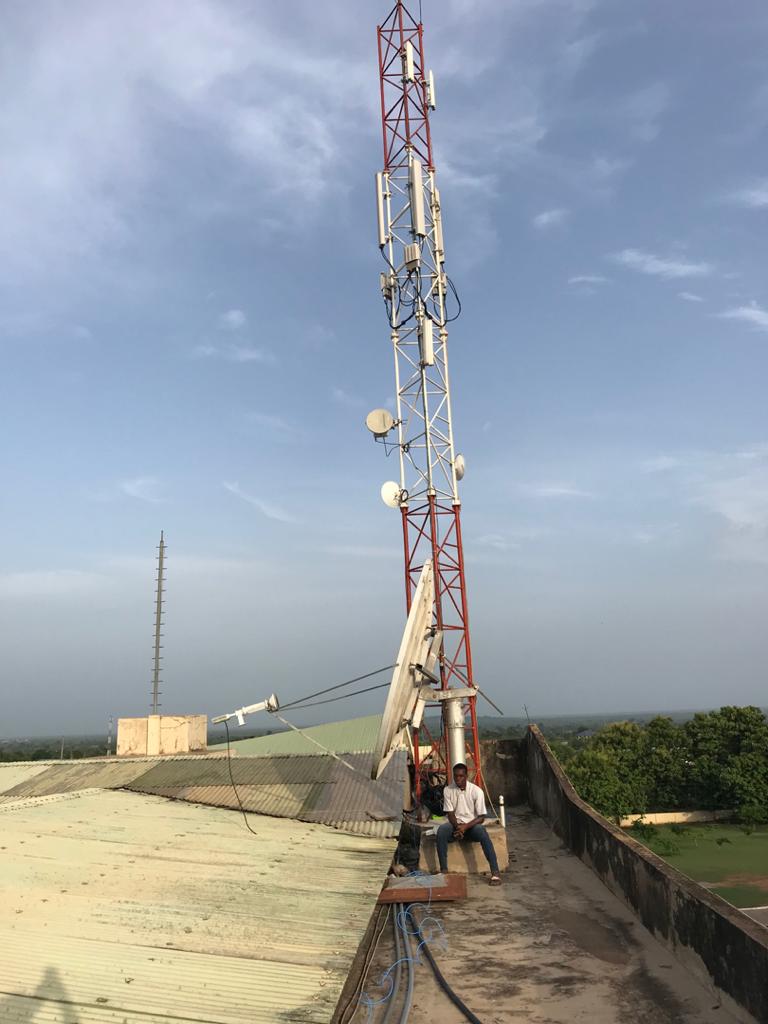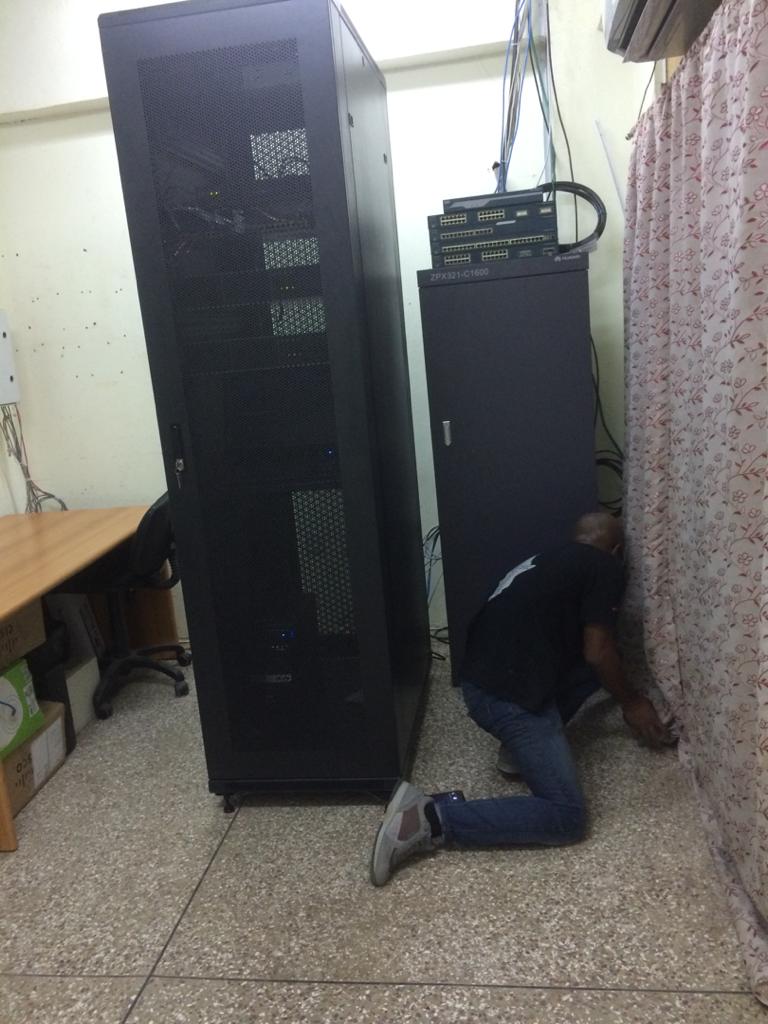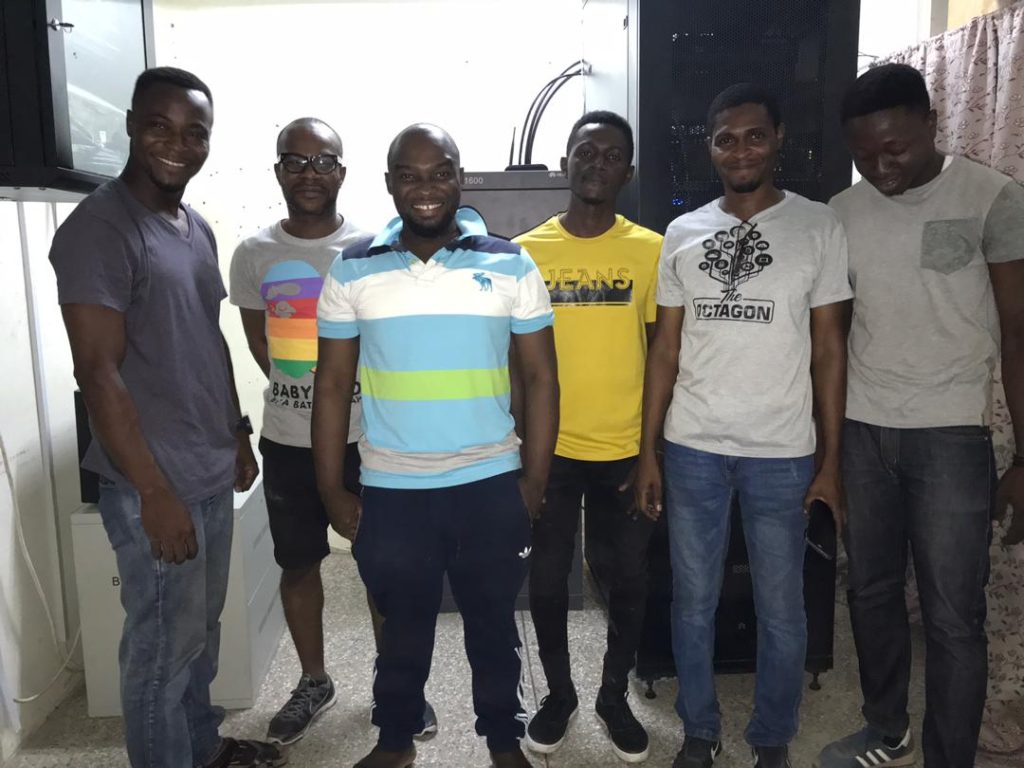Introduction
Ho Technical University (HTU) is in Ho, the Capital City of the Volta Region of Ghana. It was established as a Technical Institute in 1968. It became a Polytechnic in 1986 and upgraded to a Technical University in 2016.
The University has student population of about 5000 and needs a campus wide wireless solution for its community to complement the limited computer labs available for learning and research.
The community was having difficulty setting up a campus wide wireless even though it had few wireless devices already deployed.
Since December 2019 I have been consulting with the IT Team of the University and the major problem I noticed was the structure of the wired network. It was flat network with a lot of issues such rogue DHCP servers and IP address conflicts.

Solving HTU Network problems was divided in to Two (2) Stages namely Restructuring Network and Deploying Wireless Network
1- Restructuring HTU network
The goal of this stage is to structure the network into a 3 Tier Hierarchical network with :
- a. Core layer is considered as the back bone of networks. The Core Layer routers move information on the network as fast as possible.
- b. Distribution Layer Distribution Layer ensures that packets are properly routed between subnets and VLANs in the network.
- c. Access Layer includes switches which are connected to the end devices (Computers, Printers, Servers etc). Access layer switches ensures that packets are delivered to the end devices.
In order to achieve the goal stated above we went through the following sub-stages:
- i) Reconnaissance: It included identifying and documenting the current physical structure (available network devices (eg switches, routers, Access Points, servers etc) and connections). Also the logical structure (configurations, services etc.)
- ii) Planning stage is the preparation stage. We took into considerations the following solutions listed below.
- Proposed Solutions:
- —- Design new IP subnet structure
- —- Design new network diagram
- —- Design naming convention for all network devices.
- —- plotting old devices on new diagram
- —- elimination of devices (routers) outside Server room (NOC)
- —- Setup Point-to-Point Links (P2P) to other buildings
- —- Connect others buildings (APs and switches) to NOC via P2P links
- —- Reconfigure network devices
- —- Setup new network services
- iii) Implementation stage is the action stage. All the solutions we planned for were deployed. Work was done during the weekends and in the following order:
- —- Setup server farm on VMWare ESXi servers.
- Migrating Active Directory and DNS services to server.
- Setup servers for Network services and network monitoring eg. DHCP, SNMP, TACACS+, Cacti, Nagios, RADIUS.
- —- Updating configurations on Corer (Cisco) router. It includes:
- Updating router IOS.
- Setup IP subnets, subinterfaces and bandwidth restrictions.
- Setting up VLANs, SNMP client, TACACS+, IP address, DHCP helper etc.
- Connect and Test internet connectivity
- —- Updating configurations on Distribution (Cisco Gigabit) switch. It includes:
- Updating switch IOS.
- Setting up VLANs, SNMP client, TACACS+, IP address, DHCP helper etc.
- Connect and Test connectivity to Core Layer.
- Test inter VLAN connectivity.
- Connect ESXi servers to Distribution switch.
- —- Configure and mount (Ubiquiti) Point to Point Links
- Point to Point links serve as uplinks from the NOC to 5 other buildings.
- Links are in Transparent Bridge Mode and configured to allow all VLANs traffic.
- Connect P2P Links from NOC mast to Distribution (Cisco Gigabit) switch
- —- Updating configurations on Access (Cisco) switches in the various buildings and NOC. It includes:
- updating switch IOS.
- Setting up VLANs, SNMP client, TACACS+, IP address, DHCP helper etc.
- Adding switchports to appropriate VLANs.
- Configure and connecting uplink ports to P2P.
- Testing for connectivity to NOC.
- —- Final Testing of connectivity from the various buildings and offices.
- —- Cleanup Server room (NOC)
- Remove old and damages damages devices.
- rearranging
- —- Setup and install other services servers which include:
- Enterprise Resource (Odoo).
- Learning Management Systems (Moodle).
- Ticketing (Request Tracker).
- Ubiquiti Unifi Controller and related software.
- Other In-house Applications.
- —- Setup End User Computers.

2 – Deploying Campus Wireless Network
After completing the network restructuring stage, we took advantage of the CoVid-19 lock down period in Ghana to deploy a campus wide wireless network.
- Ubiquiti Unifi devices were used because they were enterprise grade solution, they were already procured and could be managed easily from the enterprise controller software.
- Users and Access Points (AP) authenticate with 802.1x backed by a freeRADIUS server.
- The Campus Wireless Network broadcasts four (4) network SSIDs on both 2.4GHz and 5GHz bands. Each SSID was assigned to its own VLAN with internet bandwidth restrictions implemented.
Listed below are the SSIDs broadcasting on the campus:
HTU-STAFF This SSID is available to active staff of the University and can authenticate with their Staff Credentials.
HTU-STUDENT This SSID is available to registered students of the University and can authenticate with their student credentials.
HTU-GUEST This SSID is available to guests of the University and can authenticate with temporary credentials provided by the IT Department.
HTU-PUBLIC This SSID is setup with captive portal and is available to non-members of the University who can purchase vouchers to authenticate.
Challenges
There were not enough Access Points to cover the entire campus and for that reason only Academic Areas were prioritized. Those are Administration, Faculty, Lecture and Library buildings.
Conclusion
The restructuring of the wired network has resolved the major issues and brought stability to the network. The entire project was completed with existing hardware and no funds needed.
The knowledge I acquired from the Internet Society (ISOC) Building Wireless Community Network Training was very useful as it served as a guideline in the deployment of the HTU campus wireless network.



Online Resources:
Online Demo of Ubiquiti Controller https://demo.ui.com/manage/site/office/dashboard
Unifi Devices https://www.ui.com/unifi/unifi-ap/
Configure Unifi Devices https://help.ui.com/hc/en-us/articles/204909754-UniFi-Layer-3-methods-for-UAP-adoption-and-management#ssh











